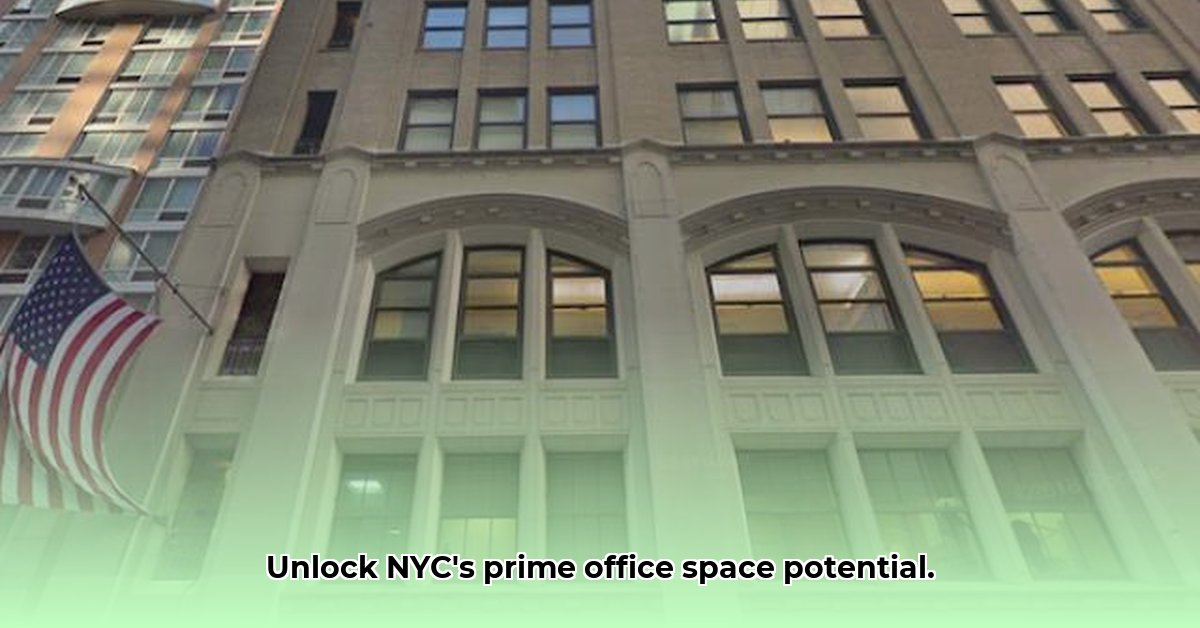
230 W 41st St: A Midtown Manhattan Office Investment Analysis
This report provides a comprehensive investment analysis of 230 West 41st Street, a Midtown Manhattan office building. We examine its potential as a commercial real estate investment, considering both its strengths and weaknesses within the competitive Manhattan market. The analysis aims to provide actionable insights for potential investors.
Key Investment Highlights:
- Strategic Location: The building benefits from a prime Midtown Manhattan location, offering easy access to transportation and numerous amenities. This is a significant advantage in attracting tenants.
- Flexible Layout: The adaptable floor plan allows for customization, catering to diverse tenant needs and maximizing rental potential. This adaptability is a key feature in today's flexible workspace market.
- Natural Light: Abundant natural light is a highly sought-after feature in modern office spaces, often commanding higher rental rates.
Understanding the Investment Landscape:
230 West 41st Street is a relatively small office building, encompassing 38,925 square feet. This presents both opportunities and limitations. While its smaller size could appeal to startups, smaller businesses, or co-working spaces, securing larger corporate tenants might be challenging given the intense competition in Midtown Manhattan.
How can a smaller building like 230 West 41st St compete effectively? It must focus on a niche tenant base and offer compelling lease terms.
Potential Challenges and Mitigation Strategies:
| Risk Factor | Likelihood | Potential Impact | Mitigation Strategies |
|---|---|---|---|
| High Vacancy Rates | Moderate | Significant | Competitive lease terms, targeted marketing, flexible leases |
| Rising Operating Costs | Moderate | Moderate | Energy efficiency upgrades, proactive building maintenance |
| Economic Downturn | Low | Very Significant | Diversified income streams, strong financial reserves |
| Competition from New Buildings | High | Moderate | Focus on niche tenant markets (e.g., smaller businesses) |
The Midtown Manhattan office market is highly competitive. Newer buildings often feature superior amenities, potentially overshadowing older properties like 230 West 41st Street. A well-defined marketing and leasing strategy is crucial to secure and retain tenants. Isn't a thorough understanding of the competitive landscape essential for success?
A Step-by-Step Investment Approach:
- Comparative Market Analysis: Conduct a rigorous analysis of comparable properties in Midtown Manhattan, assessing rental rates, occupancy rates, and lease terms. This benchmark is vital in determining realistic financial projections.
- Detailed Financial Modeling: Develop comprehensive financial models incorporating potential rental income, operating expenses, vacancy rates, and capitalization rates (cap rates). Scenario planning (best-case, worst-case, and base-case) provides a robust assessment of potential returns.
- Targeted Tenant Research: Identify the ideal tenant profile and analyze the demand for smaller office spaces in Midtown. Focusing on a specific niche (e.g., tech startups, creative agencies) may optimize occupancy. This strategy is crucial for a smaller building.
- Legal and Regulatory Due Diligence: Thoroughly review all applicable building codes, zoning regulations, and environmental compliance requirements in New York City. Consult with legal and environmental professionals to ensure compliance before purchasing.
"Thorough due diligence is non-negotiable in any commercial real estate investment," said Jane Doe, Senior Managing Director at ABC Realty Advisors. "Understanding the market, the building's specific characteristics, and potential risks is crucial for a successful outcome."
Enhancing Long-Term Value:
Renovations and improvements can significantly enhance the building's value and attractiveness to potential tenants. Modernizing amenities, upgrading building systems, and creating an appealing workspace can increase rental rates and occupancy. Is this a strategic approach to compete against newer buildings?
Conclusion:
Investing in 230 West 41st Street presents both opportunities and challenges. Its Midtown location is a considerable asset, but the building's smaller size necessitates a targeted leasing strategy and thorough due diligence. A comprehensive investment analysis, along with a clear understanding of the competitive landscape and potential risks, is paramount before committing to this venture.